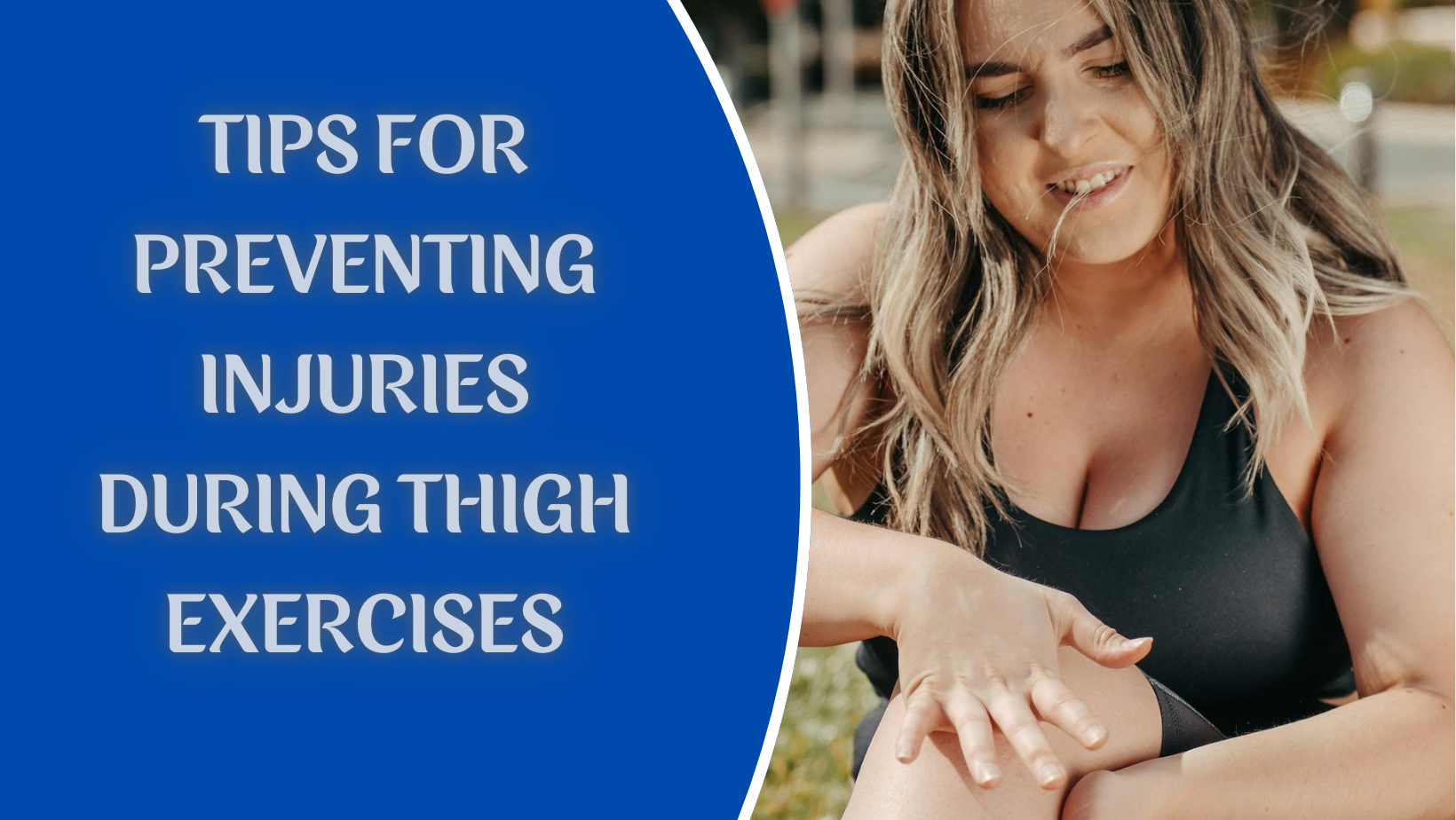Are you looking to strengthen your thighs through exercise but want to avoid any potential injuries? Look no further! In this article, we will provide you with some valuable tips to help prevent injuries during thigh exercises. By following these simple and effective strategies, you can safely and effectively work on toning your thighs without the fear of hurting yourself. With our expert advice, you’ll be well on your way to achieving those toned and sculpted thighs you’ve always wanted. So let’s dive right in and discover the secrets to injury-free thigh exercises! Thigh exercises are a fantastic way to strengthen and tone your legs. However, it’s important to approach these exercises with caution to avoid potential injuries. By following these tips, you can ensure that your thigh workouts are not only effective but also safe.
Understanding the Importance of Warm-Up
Before jumping right into your thigh exercises, it’s crucial to warm up your muscles. A proper warm-up increases blood flow to your muscles, preparing them for the upcoming workout. This can be as simple as walking or jogging in place for a few minutes, or even performing dynamic stretching exercises like leg swings or walking lunges. Remember, a warm muscle is less likely to become injured than a cold one.
Proper Stretching Techniques
Stretching is an essential part of any exercise routine, including thigh exercises. However, it’s important to perform static stretching after your workout, rather than before. Prioritize dynamic stretching during your warm-up and save static stretching for cooling down to prevent your muscles from becoming overstretched and potentially injured.
Using Correct Form and Technique
When it comes to thigh exercises, using correct form and technique is crucial. Improper form can put unnecessary strain on your muscles and joints, increasing the risk of injury. Take the time to learn the proper technique for each exercise you perform and focus on maintaining good form throughout your workout. If you’re unsure about the correct form, consider working with a personal trainer or fitness professional who can guide you.
Gradually Increasing Intensity and Difficulty
As with any type of exercise, it’s important to gradually increase the intensity and difficulty of your thigh workouts. Pushing yourself too hard too soon can lead to overuse injuries or muscle strains. Start with lighter weights or lower intensity exercises and gradually increase as your strength and fitness levels improve. This steady progression will not only prevent injuries but also ensure that you continue to see progress in your workouts.
Listening to Your Body
One of the most important things you can do to prevent injuries during thigh exercises is to listen to your body. Pay attention to any discomfort or pain you may feel during your workouts, as this can be a sign of an impending injury. If something doesn’t feel right, take a break or modify the exercise to avoid further strain. Remember, it’s always better to be cautious and prevent an injury than to push through and make it worse.
Using Appropriate Equipment
Using the right equipment is essential for preventing injuries during thigh exercises. Whether it’s using proper footwear that provides adequate support and stability or using resistance bands or weights that are suitable for your fitness level, using the right equipment can make a significant difference in preventing injuries. Invest in good-quality gear that is appropriate for the specific thigh exercises you’ll be performing.
Avoiding Overtraining and Resting
While it can be tempting to push yourself to your limits every workout, it’s important to listen to your body’s need for rest and recovery. Overtraining can lead to burnout, decreased performance, and an increased risk of injury. Make sure to incorporate rest days into your workout schedule and don’t be afraid to take additional rest days if your body is telling you it needs it.
Maintaining Proper Nutrition and Hydration
Proper nutrition and hydration play a vital role in preventing injuries during thigh exercises. Make sure you’re fueling your body with the right nutrients it needs to perform at its best. Ensure you’re consuming an adequate amount of protein to support muscle repair and growth and staying hydrated throughout your workout. Dehydration can lead to muscle cramps and decreased performance, increasing the risk of injury.

Seeking Professional Guidance
If you’re new to thigh exercises or have any concerns about your technique or workout routine, it’s always a good idea to seek professional guidance. Working with a personal trainer or fitness professional can give you the knowledge and confidence to perform thigh exercises safely and effectively. They can also provide personalized tips and modifications based on your individual needs and goals.
Treating Minor Injuries and Discomfort
Even if you take all the necessary precautions, injuries can sometimes still happen. If you experience any minor injuries or discomfort during your thigh exercises, it’s important to take them seriously and address them promptly. Resting, applying ice to the affected area, and using over-the-counter pain relievers can help alleviate pain and speed up the healing process. If the pain persists or worsens, seeking medical advice is recommended.
By following these tips for preventing injuries during thigh exercises, you can ensure that your workouts are not only effective but also safe. Remember to warm up properly, use correct form and technique, gradually increase intensity, listen to your body, use appropriate equipment, rest and recover, maintain a proper diet and hydration, seek professional guidance if needed, and address any minor injuries or discomfort promptly. With these precautions in place, you can enjoy your thigh exercises while minimizing the risk of injury. Stay safe and keep those thighs strong!

